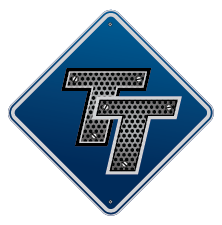Slip Shifting
Topic 13234 | Page 1

As far as I know, you can float at any rpm as long as the engine, transmission and road speed are all matched. When I was training on a manual, there were times when I had to go higher in the RPM band before shifting (going uphill for example). I was still able to float it. There isn't a fixed rpm sweet spot, it's just a matter of finding the sweet spot for any given rpm.
And yeah, if you're empty and maybe going downhill a bit, 1200 would be a decent rpm to shift at, but I would try to avoid lugging the engine as much as possible. Try going up to like 1500.

Just do whatever lets you catch the gear with minimum fuss right now, but you'll want to learn to shift progressively if you care about fuel mileage.
You'll shift quicker and at lower rpms in the low gears and progressively go up in rpms as the gears get higher. For example, I generally shift around 1000 - 1200 rpms up to 7th and around 1300 or so for 8th - 10th. I'll wind the rpms up higher if going up a grade and heavy, and might shift lower or even skip gears if going downhill. Or, like right now I'm driving a non-evo cascadia and I'm not getting a fuel bonus no matter what I do, so I just drive it like I stole it. 1400 - 1500 rpm shifts all day long...
But yeah you can float all over the rpm range. Generally if you are shifting at lower rpms below peak torque the rpms don't have to fall as much before easing into the next gear, you can shift faster.
New Reply:
New! Check out our help videos for a better understanding of our forum features

















Preview:








 TT On Facebook
TT On Facebook
I'm getting the hang of float shifting up, but still double clutching down. The question I have is, I'm up shifting at 1200, but it seems like it's too low. It feels like the engine wants to lug a bit.
Is that normal ? If I go faster, "floating" won't work, right ? (There's only 1 sweet spot)
Double Clutch:
To engage and then disengage the clutch twice for every gear change.
When double clutching you will push in the clutch, take the gearshift out of gear, release the clutch, press the clutch in again, shift the gearshift into the next gear, then release the clutch.
This is done on standard transmissions which do not have synchronizers in them, like those found in almost all Class A trucks.
Double Clutching:
To engage and then disengage the clutch twice for every gear change.
When double clutching you will push in the clutch, take the gearshift out of gear, release the clutch, press the clutch in again, shift the gearshift into the next gear, then release the clutch.
This is done on standard transmissions which do not have synchronizers in them, like those found in almost all Class A trucks.